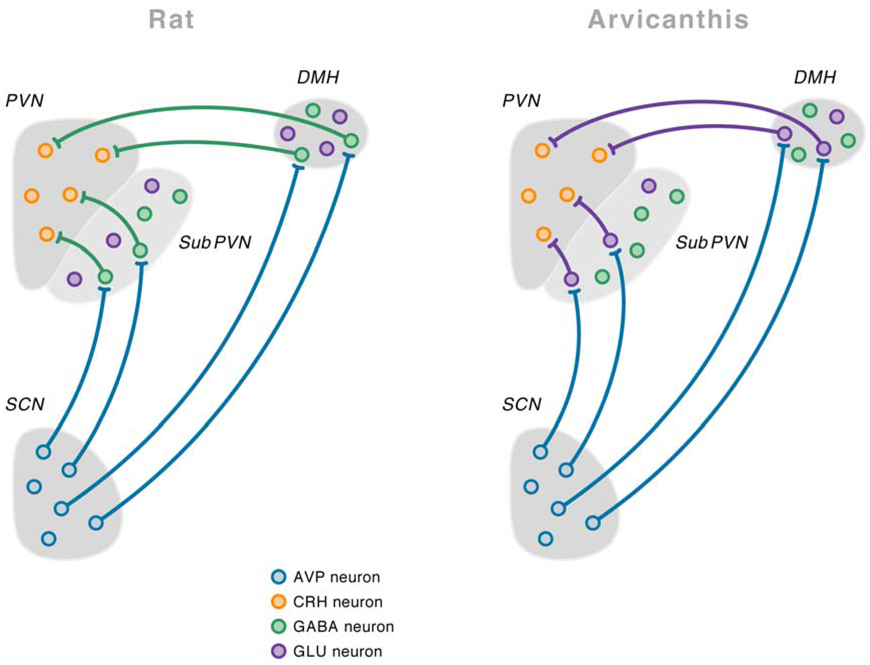Fig.3. Detailed anatomical scheme of demonstrated and putative* connections of the suprachiasmatic nucleus (SCN) in the rat and Arvicanthis ansorgei brain to explain the opposite effects of vasopressin on the HPA axis in these two species.
Vasopressin is released during the light period, both in the nocturnal rat and the diurnal Arvicanthis ansorgei. In rats vasopressin release during the light period will inhibit the corticotropin-releasing hormone (CRH)-containing neurons in the paraventricular nucleus of the hypothalamus (PVN) by contacting γ-aminobutyric acid (GABA)ergic interneurons in the subPVN and dorsomedial nucleus of the hypothalamus (DMH). On the other hand, in the Arvicanthis ansorgei, vasopressin release during the light period will stimulate CRH-containing neurons because it acts on the glutamatergic, instead of GABAergic, interneurons in the subPVN and DMH. *Only the projections from the subPVN and DMH to the PVN in the Arvicanthis ansorgei have not been formerly confirmed by tracing experiments. With permission from (Kalsbeek et al., 2008).

